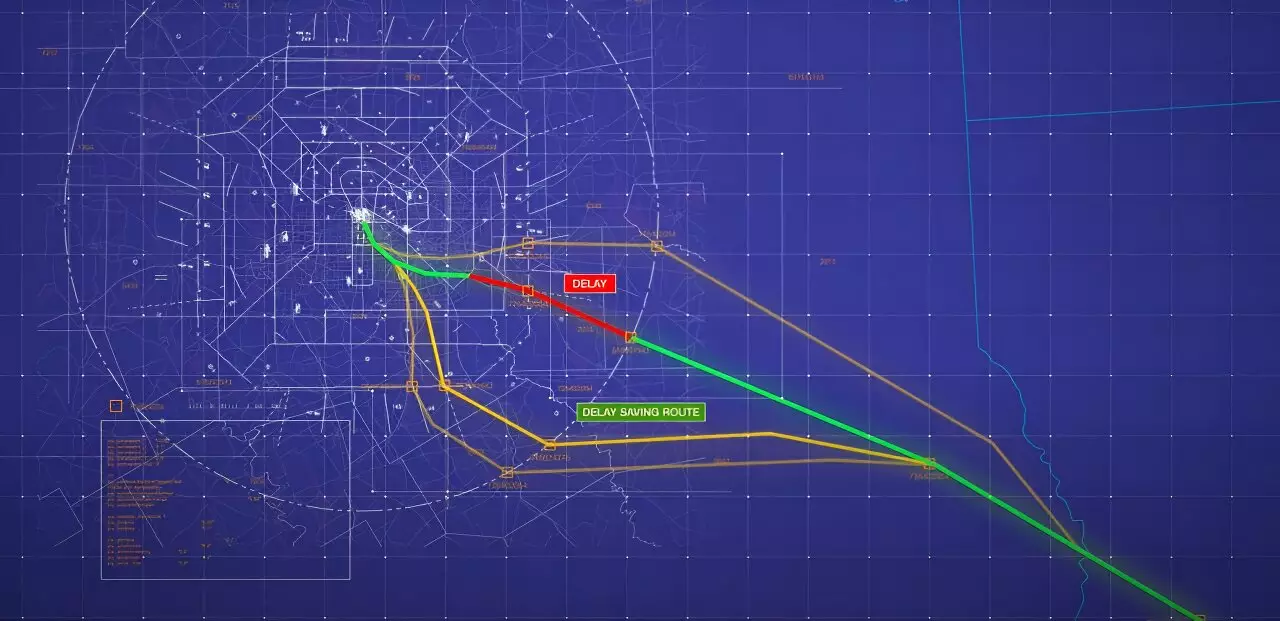In today’s fast-paced world, where time is of the essence, the aviation industry is constantly looking for innovative solutions to streamline operations and ensure the safety and efficiency of air travel. Just like your smartphone navigation app can instantly analyze information from many sources to suggest the best route to follow, a NASA-developed resource is now making data available to help the aviation industry do the same thing. To assist air traffic managers in keeping airplanes moving efficiently through the skies, information about weather, potential delays, and more is being gathered and processed to support decision-making tools for a variety of aviation applications. Appropriately named the Digital Information Platform (DIP), this living database hosts key data gathered by flight participants such as airlines or drone operators. It will help power additional tools that, among other benefits, can save you travel time.
The platform and digital services provided by NASA’s DIP have even more benefits than just saving time on a journey. For example, NASA recently collaborated with airlines to demonstrate a traffic management tool that improved traffic flow at select airports, saving thousands of pounds of jet fuel and significantly reducing carbon emissions. Now, much of the data gathered in collaboration with airlines and integrated on the platform is publicly available. Users who qualify can create a guest account and access DIP data at a new website created by the project. The intent is not to compete with others. Instead, the hope is that industry will see DIP as a reference they can use in developing and implementing their own platforms and digital services. “Ultimately, the aviation industry—the Federal Aviation Administration, commercial airlines, flight operators, and even the flying public—will benefit from what we develop,” said Swati Saxena, DIP project manager at NASA’s Ames Research Center in California.
NASA’s vision for 21st-century aviation involves revolutionary next-generation future airspace and safety tools. During the 2030s and beyond, the skies above the United States are expected to become much busier. Facing this rising demand, the current National Airspace System—the network of U.S. aviation infrastructure including airports, air navigation facilities, and communications—will be challenged to keep up. DIP represents a key piece of solving that challenge. NASA’s vision for future airspace and safety involves new technology to create a highly automated, safe, and scalable environment.
To begin implementing this new vision, NASA’s aeronautical innovators are evaluating their platform, DIP, and services at several airports in Texas. This initial stage is a building block for larger such demonstrations in the future. “These digital services are being used in the live operational environment by our airline partners to improve efficiency of the current airspace operations,” said Swati Saxena. “The tools are currently in use in the Dallas/Fort Worth area and will be deployed in the Houston airspace in 2025.” The results from these digital tools are already making a difference. During 2022, a NASA machine learning-based tool named Collaborative Digital Departure Rerouting saved more than 24,000 lbs of fuel by streamlining air traffic in the Dallas area. If such tools were used across the entire country, the improvements made in efficiency, safety, and sustainability would make a notable difference to the flying public and industry.
NASA’s Digital Information Platform is revolutionizing the aviation industry by providing data-driven solutions that improve efficiency, safety, and sustainability in air travel. With the implementation of advanced technology like machine learning and artificial intelligence, the future of aviation looks promising. By collaborating with airlines and other industry partners, NASA is paving the way for a more streamlined and environmentally friendly aviation sector. The development of DIP under NASA’s Airspace Operations and Safety Program serves as a testament to the agency’s commitment to pushing the boundaries of innovation in the field of aviation.



Leave a Reply